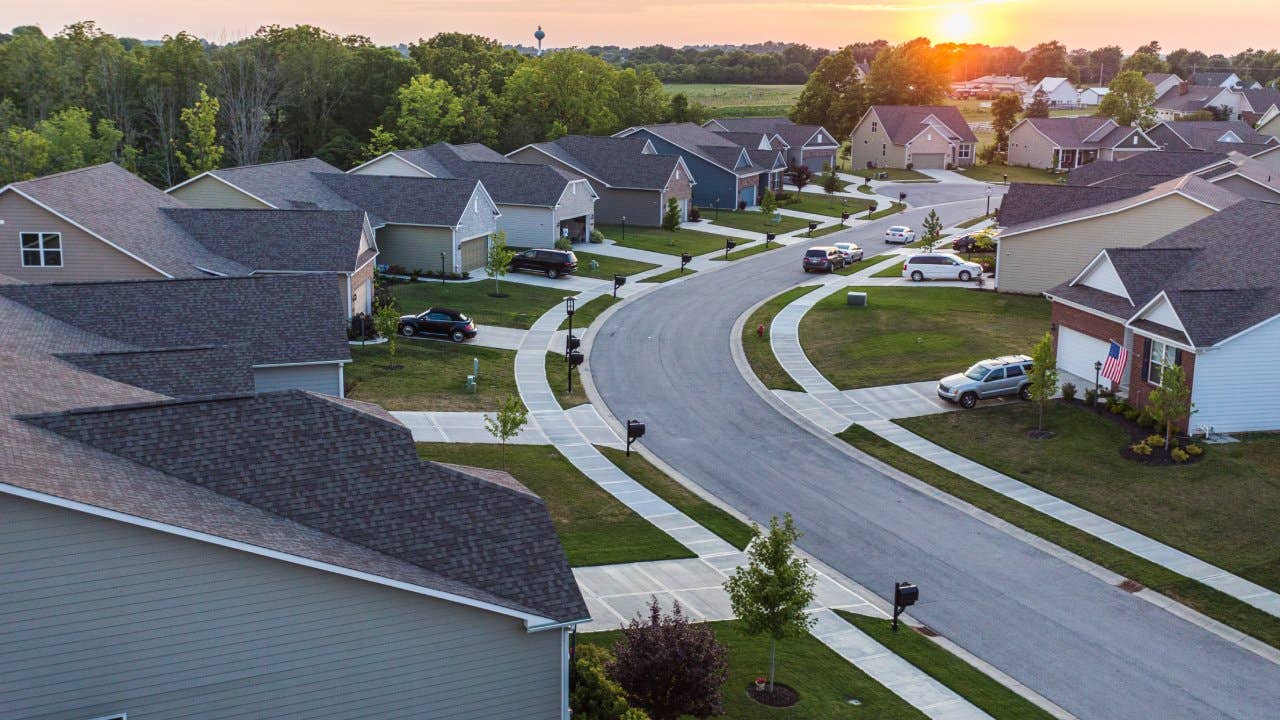Key mortgage rate surges past 6% as Fed battles inflation

The Bankrate promise
At Bankrate we strive to help you make smarter financial decisions. While we adhere to strict , this post may contain references to products from our partners. Here's an explanation for .
Mortgage rates surged into 6 percent territory this week as inflation in May came in hotter than projected and the bond market swung wildly in response to how the Federal Reserve might react. On Wednesday, the Fed announced a three-quarter point hike in its key fed funds rate, with further increases planned this year.
Inflation is out of control and until it peaks, neither will mortgage rates.
— Greg McBrideChief financial analyst, Bankrate
With the exception of adjustable-rate mortgages (ARMs) and home equity products, the Fed’s actions don’t influence mortgage rates — but as observed this week, speculation in the lead-up to its decisions does. Fixed mortgage rates track the 10-year Treasury yield, which reached a year-high this week after Friday’s consumer price report revealed a staggering 8.6 percent increase in prices in May.
“Inflation is out of control and until it peaks, neither will mortgage rates,” says Greg McBride, CFA, chief financial analyst for Bankrate. “The fresh 40-year high in the May Consumer Price Index and the surge in consumers’ inflation expectations has forced the Fed to act more aggressively and produced one of the biggest one-week spikes in bond yields and mortgage rates in decades.”
“Consumers haven’t seen mortgage rates above 6 percent since 2008,” says Greg Schwartz, CEO and founder of mortgage lender Tomo. “The pace of this move is what’s most concerning as consumers’ buying power evaporated quicker than any time in recent memory. Further, volatility in rates may not decrease anytime soon either.”
Ahead of the conclusion of the Fed meeting on Wednesday, Bankrate’s average 30-year fixed mortgage APR landed just shy of 6 percent, at 5.990 percent. However, advertised loan offers surpassed 6 percent, even for well-qualified borrowers.
Bankrate’s 30-year benchmark from our weekly national survey jumped to 5.78 percent. Compared to last week’s benchmark 5.36 percent, borrowers will now pay $26 more a month per $100,000 of mortgage. At 6 percent, that’ll climb to $40 more.
Mortgage rates started ticking up in January following a period of historic lows in 2020 and 2021. By February, the 30-year average exceeded 4 percent, continuing on past 5 percent in April. That run-up has given borrowers pause, with mortgage applications recently diving to a 22-year low, according to the Mortgage Bankers Association.
“The speed in which mortgage rates went from 3 percent in January to 6 percent in June is rather astonishing,” says Charlie Crawford, chairman and CEO of Hyperion Bank, a community bank serving Greater Philadelphia and Atlanta. “This change will certainly dampen mortgage demand and, with the exception of cash-out, will curtail most refinances. The residential real estate market remains strong with the low inventory levels.”
“Any persistent or obvious signs of a wage or inflationary spiral will continue to lead to more aggressive policies,” says Robert Heck, vice president of Mortgage at Morty, a mortgage broker. “If things progress as they are, it’s possible we’ll see mortgage rates head towards 7 percent or higher, on par with the inflationary environment of the 1980s.”
What you can do as mortgage rates rise
- Get or keep your credit in shape. With no indication of rates slowing, it’s critical to improve your credit or maintain an already-good score. This includes eliminating or paying down credit card debt, says David Hochberg, vice president of Lending with Team Hochberg at Lower, based in Chicago. “Your credit score is the most important factor,” says Hochberg. “Get your credit profile as strong as humanly possible. If you’re thinking about buying a home, the sooner you get a mortgage professional to pull your credit, the better.” Here are some ways to boost your credit.
- Comparison-shop. When you’re ready to borrow, aim for at least three quotes from mortgage lenders — research shows this can help you save thousands over the course of a 30-year loan. When comparing loan offers, consider the APR, which encompasses all of the fees in addition to the interest rate. Because rates shift rapidly, it’s best to get quotes all on the same day.
- Don’t rule out any options. You might be set on locking in a rate now with a fixed-rate mortgage, but an ARM comes with a lower rate to start, and with rates up, more borrowers are exploring this route. If you can qualify for an ARM and aren’t planning on staying in the home longer than five years, it might be worth considering. Another option to bring your rate down is to buy points.
Related Articles


Mortgage rate forecast for July 2023: Still-strong economy kills hopes for lower rates


Mortgage rate forecast for June 2022: Recession worries may keep rates in check